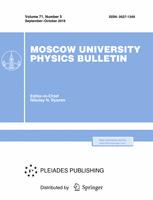Dictyostelium discoideum (DD) is a species of soil-dwelling amoeba belonging to the phylum Amoebozoa, infraphylum Mycetozoa. The life cycle of this organism, commonly referred to as a slime mold, consists of unicellular and multicellular stages: when food is scarce, myxamoebae stop feeding, move to each other, collide and stick together, forming intermediate clusters, which then aggregate to form a so-called slug, which includes up to 105 cells. This process is controlled by interacting intracellular and extracellular signaling systems. In this paper, we propose a model of the initial stages of myxamoeba aggregation based on cellular automata. The model includes four interconnected systems of cellular automata, one of which, that describes the movement of myxamoebae, consists of movable cellular automata. The other three systems model the release and diffusion of three main signal components forming the chemotactic field that determines the behavior of myxamoebae. Numerical experiments have shown that the model describes dynamics of the mixamoeba distribution on the surface corresponding to the real DD aggregation process. In particular, it was shown that at the first stages of aggregation, cell clustering always occurs, after which clusters merge to form continuous cell flows moving to the center of aggregation.
$^1$M.V. Lomonosov Moscow State University



